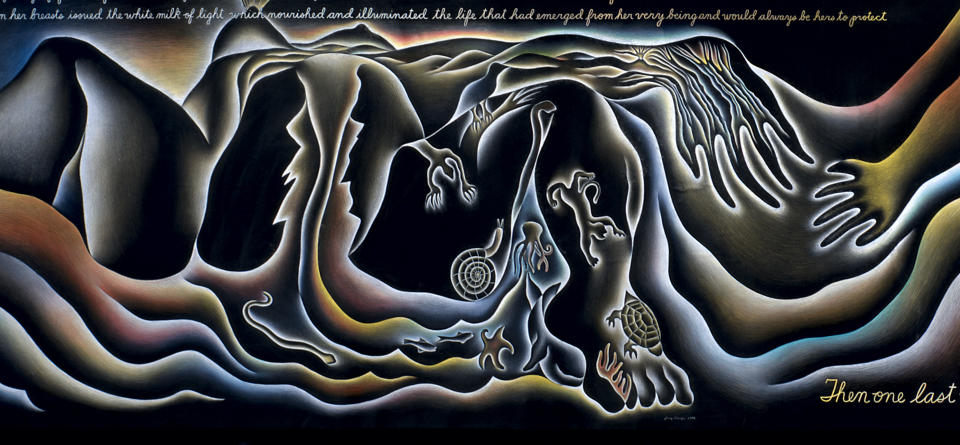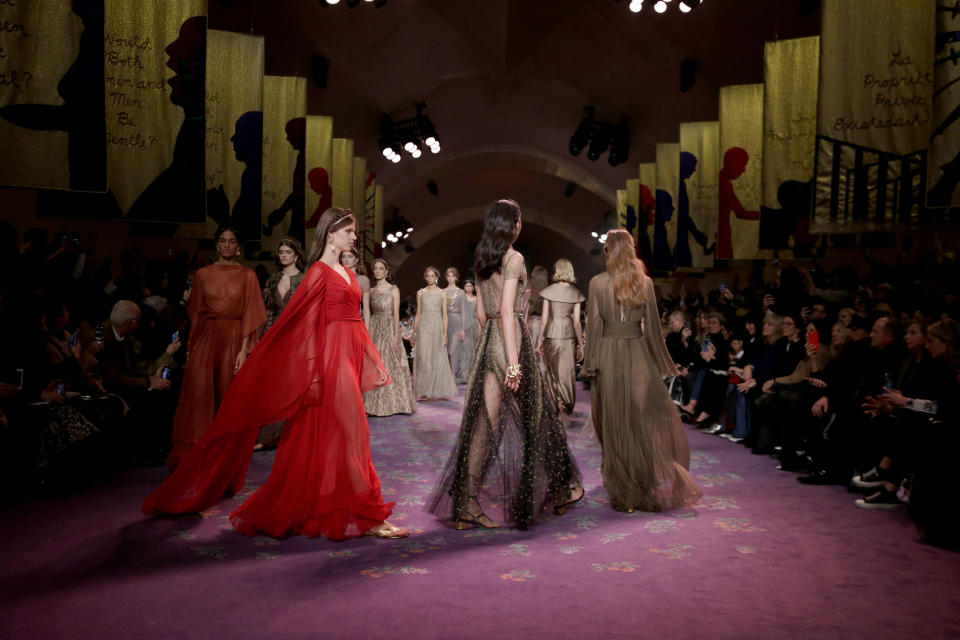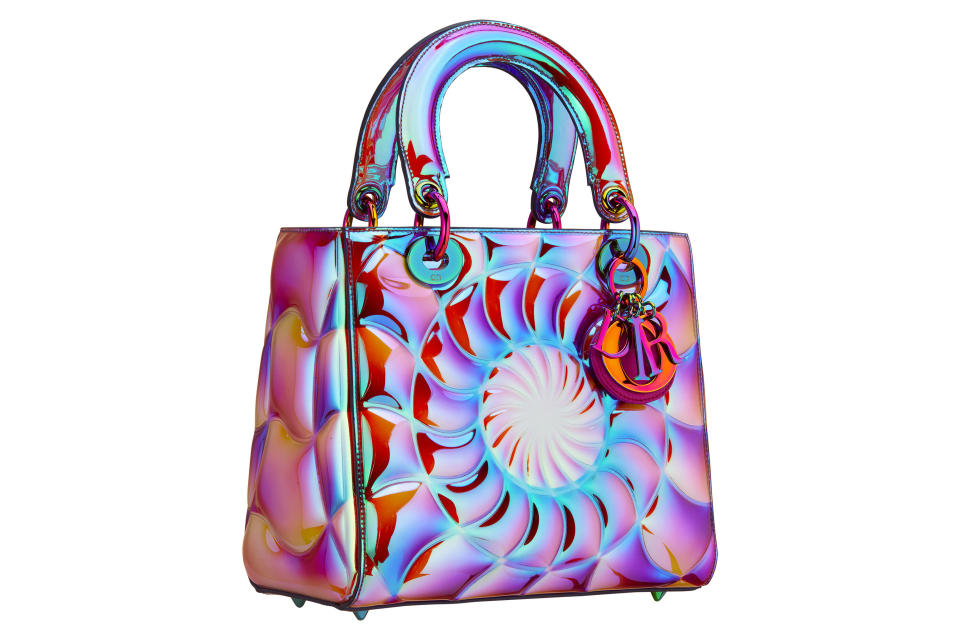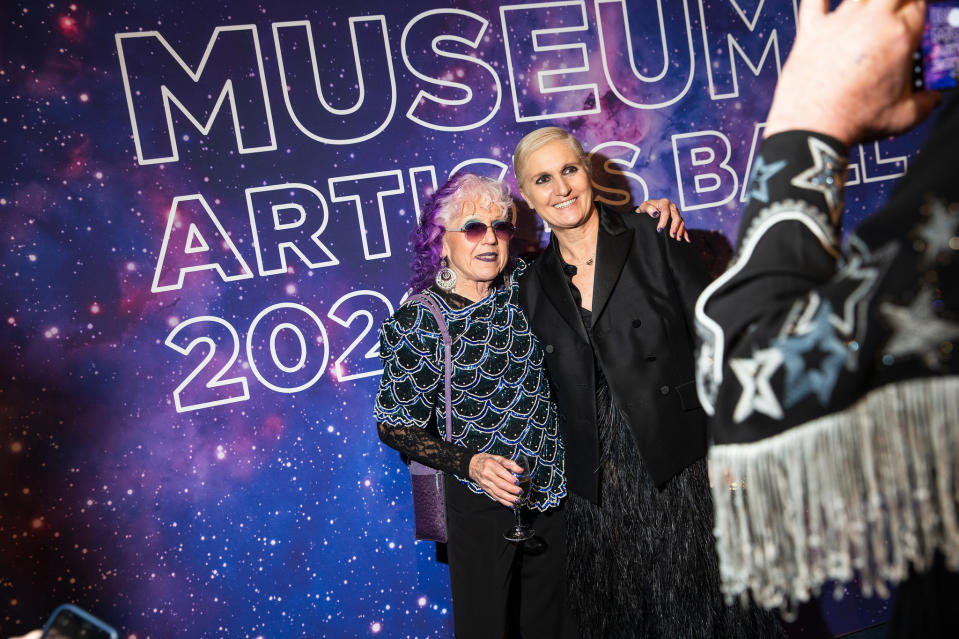Judy Chicago Reveals All in New Show at the Serpentine Galleries in London

LONDON — It was a little over a year ago, and Judy Chicago was getting fed up with the relentless pestering from Hans Ulrich Obrist, the curator and artistic director of the Serpentine Galleries.
Obrist had wanted to do a retrospective of Chicago’s work through the lens of her drawings, and was looking for unseen work. But it was a difficult ask for Chicago, who’s used to working on a grand scale and whose many projects have been realized and displayed around the world.
More from WWD
Her most famous works include “The Dinner Party,” an installation featuring a life-size table set with 39 places for influential women throughout history, and “The Female Divine,” an abstract female goddess installation which Chicago originally designed in the 1970s. It served as the venue for Dior’s Spring 2020 Couture show.
In the ’80s, she collaborated with more than 150 needle workers to create “Birth Project,” a series of images depicting various aspects of the birth process.
Although Chicago has been drawing since she was a small child, “even before I could talk,” she couldn’t think of anything that would satisfy Obrist.
“The Serpentine is a small space, and so Hans Ulrich had to take a different approach. He’s relentless and he kept asking: ‘Do you have any unrealized projects?’ He just came at me, over and over again,” said the 84-year-old Chicago in an interview.
Finally, it clicked. There was an unpublished manuscript that had been stuck in a drawer at Chicago’s home in New Mexico. Called “Revelations,” it was full of drawings and writings that she’d made while formulating ideas for “The Dinner Party.”

She originally conceived it as an “illuminated manuscript” and “a female Bible” of creation myths told from the point of view of women. It’s filled with fantastical, and sometimes menacing, landscapes, strange beasts, and goddesses.
No one ever wanted to publish it, but then Obrist read it, and was hooked. He said it prefigured Chicago’s entire body of work, and he was going to build the Serpentine show around it.
“I burst into tears,” said Chicago, who never thought she’d see the work published in her lifetime.
The manuscript has become the catalogue for the show, “Revelations,” which opens on Thursday and runs until Sept. 1 at Serpentine North in London. The book has also provided the framework for the show, which is the first interdisciplinary exhibition in London of Chicago’s work.
Although the focus is on drawing, there are also multimedia moments. Chicago gives viewers a virtual guided tour of “The Dinner Party,” and there are audio excerpts from the book. There is an AR element, and a video recording booth for visitors to express their views on Chicago’s work.
The artist said it was important for the show to have the interactive element. “I’m interested in providing avenues of participation and collaboration. Offering that to people around the world has been the hallmark of my career,” she said.

Obrist and Bettina Korek, the Serpentine’s chief executive officer, said the show is meant to highlight Chicago’s “exceptional drawing practice” as well as her abiding concerns about the environment and women’s place in society.
Obrist is one of Chicago’s many champions, and he certainly was not the first person to bring the artist’s unrealized work to life.
Maria Grazia Chiuri, creative director of Dior women’s haute couture, ready-to-wear, and accessories collections, not only showed her spring 2020 couture collection inside “The Female Divine,” she also worked with Chicago on a series of 21 large appliquéd and embroidered banners.
The banners (the drawings of which feature in the Serpentine show) posed a range of questions in English and French starting with “What if women ruled the world?” a nod to Chicago’s lifelong research and feminist activism.
Chicago has an ongoing relationship with Dior, which is headline sponsor of the Serpentine show. Not a natural fashionista, she said it was Chiuri who converted her.
“My relationship to fashion was that it was inherently oppressive to women,” said Chicago, adding that the first Dior Couture show she attended piqued her interest.
“I remember being unbelievably overwhelmed. There was work by feminist artists, but it was kind of background for the show, and I remember thinking to myself, ‘Can art have any real place here other than as background?’”
She would eventually answer that question, designing plates and handbags for Dior. She is currently working on another design project for the house that will be revealed later this year.

She likes Chiuri’s style: “Maria Grazia is using her position in the fashion world to empower women, to work with female artists and photographers to replace the male gaze, and to make clothes that models are comfortable wearing.”
Chiuri said Chicago “is constantly thinking outside the box — she doesn’t set herself any limits, which is something I think we should all strive for as women.”
The two are also co-conspirators.
During the interview, Chicago said she was gratified seeing her “Female Divine” installation on display in the garden of the Musée Rodin. After the Dior Couture show, the space remained open to the public for a week.
“It was the first time in my life when something happened that exceeded my imagination, which always seemed to be too big to fit into what was considered appropriate for women,” said Chicago.
Originally intended to be a 60-foot sculpture, “Female Divine” ended up being 225 feet and took eight engineers to design.
“And I thought it was perfect because the Rodin Museum is like a paean to masculinity, and there was my huge goddess as a living affront,” said Chicago, whose upcoming show will no doubt irk many traditional folks. And that’s just the way she likes it.

Best of WWD
Solve the daily Crossword

